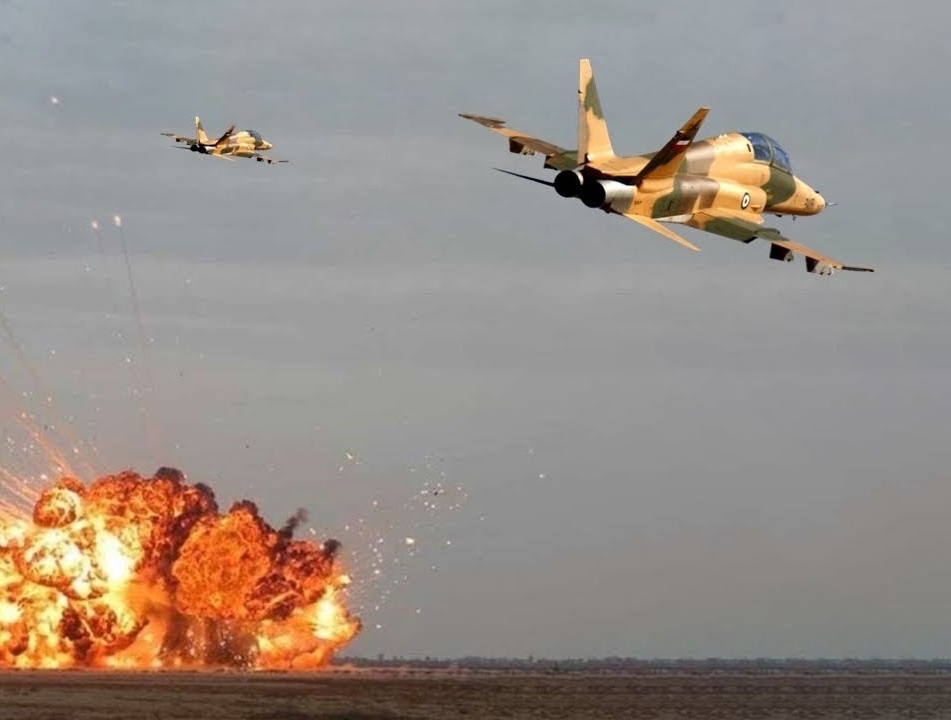Iran has warned the U.S. that it could hit military targets in the Middle East including aircraft carriers stationed in the Gulf, as tensions between the two countries continue to rise.
“They are within our reach and we can hit them if they make a move,” the commander of the Airspace Division of the Iranian Revolutionary Guard Corps, Amir Ali Hajizadeh, said on November 21, according to Tasnim.
Al Udeid Air Base in Qatar and Al Dhafra in the United Arab Emirates (UAE) are two bases within reach that host American forces. Both are less than 300 kilometers away from Iran. In addition, Kandahar base in Afghanistan is 400 kilometers away, also within striking distance.
“Today, we have missiles with a range of 700 kilometers, which can be used in the Oman Sea, and U.S. aircraft carriers are an easy target for us,” Hajizadeh said.
According to Pentagon data published in November 2017, the U.S. has roughly 54,000 troops in more than a dozen Middle Eastern countries, maintaining seven military bases throughout the region in countries including Qatar, the UAE, Bahrain and Kuwait.
Iran’s Supreme Leader, Ayatollah Ali Khamenei, has previously stated that Iran would not develop ballistic missiles with a range that exceeds 2,000 kilometers, but Iran needs missiles with just a fraction of that distance to do serious damage to American military personnel and equipment. However, the U.S. Defense Intelligence Ballistic Missile Analysis Committee wrote in a June 2017 report that Iran’s ballistic missile inventory includes systems with a range of up to 2,000 kilometers.
A range of 2,000 kilometers encompasses much of the Middle East including Israel and American military bases throughout the region. Dozens of U.S. bases surround Iran in nearly every country on the nation’s border, particularly along and within the Persian Gulf.
By imposing sanctions on Iran earlier this year – with the most hard-hitting, on Iran’s oil sector, having gone into effect earlier this month – the U.S. wants Iran to not only stop its nuclear activities but also prevent it from further developing ballistic missile capabilities. But Iran is strengthening its defensive capabilities, and arguably increasing its influence in the region.
In July, President Hassan Rouhani threatened to close the Strait of Hormuz – the narrow waterway that separates the Persian Gulf from the Indian Ocean – and disrupt other countries' oil shipments via the strait, in case exports of Iran’s oil to international markets is impeded as a result of U.S. sanctions.
The Trump administration has been pushing Washington’s closest Arab allies to create the regional security pact, called the Middle East Strategic Alliance, which would strengthen a pan-Arab resolve to counter Iran’s actions.







 President Ilham Aliyev shed light on the evolving contours of the peace process with Armenia during an international conference in Baku this week. ...
President Ilham Aliyev shed light on the evolving contours of the peace process with Armenia during an international conference in Baku this week. ...
 Azerbaijan and Armenia started the process of demarcation of their border on Tuesday, with the installation of the first border markers based on ge...
Azerbaijan and Armenia started the process of demarcation of their border on Tuesday, with the installation of the first border markers based on ge...
 Armenian sappers commenced on Monday mine-clearance operations in the territories adjacent to the Saint Mary Church in village of Voskepar (Armenia...
Armenian sappers commenced on Monday mine-clearance operations in the territories adjacent to the Saint Mary Church in village of Voskepar (Armenia...
 Iran and Pakistan have signed eight cooperation documents in various fields, and agreed to strengthen ties to fight terrorism in the region.
Iran and Pakistan have signed eight cooperation documents in various fields, and agreed to strengthen ties to fight terrorism in the region.
 As the conflict between Ukraine and Russia escalates, the strategic importance of Kharkiv, Ukraine's second-largest city, has come sharply into focus.
As the conflict between Ukraine and Russia escalates, the strategic importance of Kharkiv, Ukraine's second-largest city, has come sharply into focus.
 President Aliyev emphasized the critical role of the North-South Transport Corridor in fostering transport cooperation between Azerbaijan and Russi...
President Aliyev emphasized the critical role of the North-South Transport Corridor in fostering transport cooperation between Azerbaijan and Russi...



